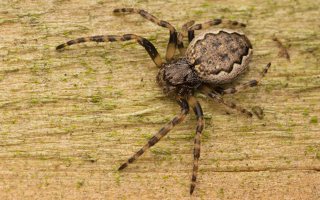- sort orderDefault
Photo title, A → Z
Photo title, Z → A
✔ Date created, new → old
Date created, old → new
Date posted, new → old
Date posted, old → new
Visits, high → low
Random - Google Map
- map
 home / Arachnida · voragyviai / Araneae · vorai / Araneidae · kryžiuočiai / Nuctenea umbratica · žievinis tūnoklis
home / Arachnida · voragyviai / Araneae · vorai / Araneidae · kryžiuočiai / Nuctenea umbratica · žievinis tūnoklis

Nuctenea umbratica · žievinis tūnoklis
- Walnut Orb-weaver, Black Orb-weaver, Toad Spider
- Spaltenkreuzspinne
- žievinis tūnoklis, plyšiamėgis landuolis
- plakanais riteņzirneklis
- kołosz szczelinowy
- en.wikipedia.org/wiki/Nuctenea_umbratica
- uksafari.com/nucteneaumbratica.htm
- naturespot.org.uk/species/walnut-orb-weaver
- gbif.org/species/2158999
The walnut orb-weaver spider is very wide and flattened, with a leathery skin. Its color ranges from red brown and grey brown to black, with a dark, yellowish to yellow-greenish leaf-like flecked marking on its opisthosoma, where small dents are visible. These are the onsets of muscles that flatten the abdomen. Nuctenea umbratica female can reach up to 15 mm in size; the males grow only up to 8 mm.
They are very common in Central Europe. The spider synanthropic; it hides during the day outside of buildings in wall crevices or under loose bark and sometimes show up inside houses. Females occur all year, while males appear mostly during the summer. This spider has a flattened body, helping it to secrete itself in cracks and crevices. Walnut orb-weaving spiders are capable of concealing themselves in very confined spaces. This tends to act as a defensive advantage and increases the number of locations an orb-web can be effectively constructed.
In the evening the spider constructs an orb-web that can be up to 70 cm in diameter. A signaling thread leads from the web to her hiding place. After dusk she sits in the web's center.
